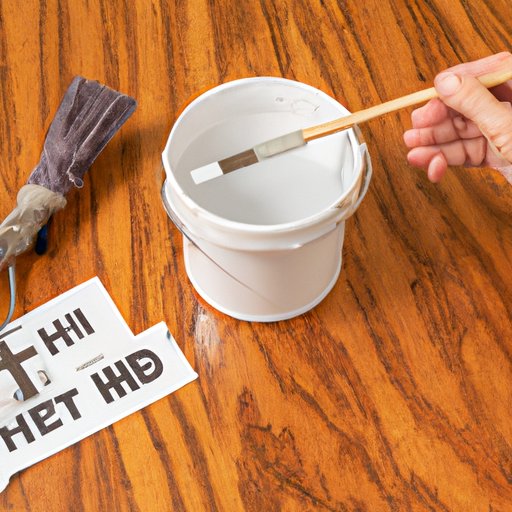
Can You Stain Over Paint?
If you’re looking to give your walls a fresh new look, you might be wondering if you can stain over paint. The answer is yes! But there are some important factors to consider before attempting to stain over painted surfaces. In this article, we’ll explore the benefits of staining over paint, common mistakes to avoid, a step-by-step guide to the process, pro tips and tricks, a detailed how-to video, and a products review. By the end of this article, you’ll have all the information you need to effectively and seamlessly stain over painted walls.
Benefits of Staining Over Paint
Staining over paint can offer a variety of benefits. First and foremost, it can offer a fresh new look without having to completely remove the existing paint. Additionally, it can provide depth and dimension to the walls, as the stain allows the texture of the paint to show through. Staining over paint can also create a unique and personalized look, as the color and finish of the stain can be customized to fit the homeowner’s specific style.
There are also practical benefits to staining over paint. For example, painting surfaces that will be exposed to water, sunlight, or high traffic areas can be more challenging, as paint can easily chip, fade, or peel. Staining over paint can provide a more durable finish and can help protect the walls from wear and tear.
Common Mistakes to Avoid
While staining over paint can provide many benefits, there are some common mistakes that people make when attempting this process. One of the biggest mistakes is failing to properly prepare the surface before beginning. It’s important to thoroughly clean the walls, remove any dust or debris, and ensure that the surface is completely smooth and even. Doing so will help the stain adhere properly and prevent any unwanted blotches or streaks.
Another common mistake is using the wrong type of stain for the surface. There are different types of stain available, each with their own specific properties and recommended uses. It’s important to choose a stain that is suitable for the surface you are working on. For example, if you’re staining over painted drywall, you’ll want to choose a water-based stain that is labeled for use on drywall.
Lastly, not allowing the stain to dry completely before applying a sealer can also lead to problems. If the stain is still wet when the sealer is applied, it can result in a sticky or tacky finish that will be difficult to remove. It’s important to follow the manufacturer’s instructions and allow ample drying time before applying a sealer.
Step-by-Step Guide
Now that we’ve discussed some common mistakes to avoid, let’s dive into the step-by-step process of staining over painted walls:
- Clean the surface with a damp cloth to remove any dirt and debris.
- Sand the painted surface lightly with a fine grit sandpaper to help the stain adhere properly.
- Apply a thin coat of stain with a brush, roller, or sprayer. Be sure to follow the manufacturer’s instructions for application and drying time.
- Allow the stain to dry completely before applying a second coat (if desired).
- Apply a sealer to protect the stained surface from damage. Again, be sure to follow the manufacturer’s instructions for application and drying time.
Pro Tips and Tricks
As with any home improvement project, there are some pro tips and tricks that can help make the process of staining over painted walls as seamless and effective as possible. One tip is to use a quality brush or roller to ensure a smooth and even application. Additionally, using a pre-stain conditioner can help the wood absorb the stain more evenly and prevent blotchy or streaky results. Finally, using a high-quality sealer can help protect the stained surface from scratches, scuffs, and dings.
Detailed How-To Video
To help visualize the process of staining over painted surfaces, check out this detailed how-to video:
Products Review
There are a variety of products on the market that can be used to stain over painted surfaces. Here are a few options to consider:
- Minwax Wood Finish Penetrating Stain: This oil-based stain is great for use on painted surfaces and provides a deep, rich color.
- Varathane Water-Based Stain: This water-based stain is easy to use and dries quickly, making it a great option for DIY projects.
- Rust-Oleum Zinsser Bulls Eye 1-2-3 Plus: This primer and sealer in one is great for prepping painted surfaces before staining and provides a smooth, even finish.
Conclusion
Staining over paint can provide a unique, durable, and personalized look to any room in the house. By following the tips and tricks outlined in this article and using quality products, anyone can achieve professional-looking results.




